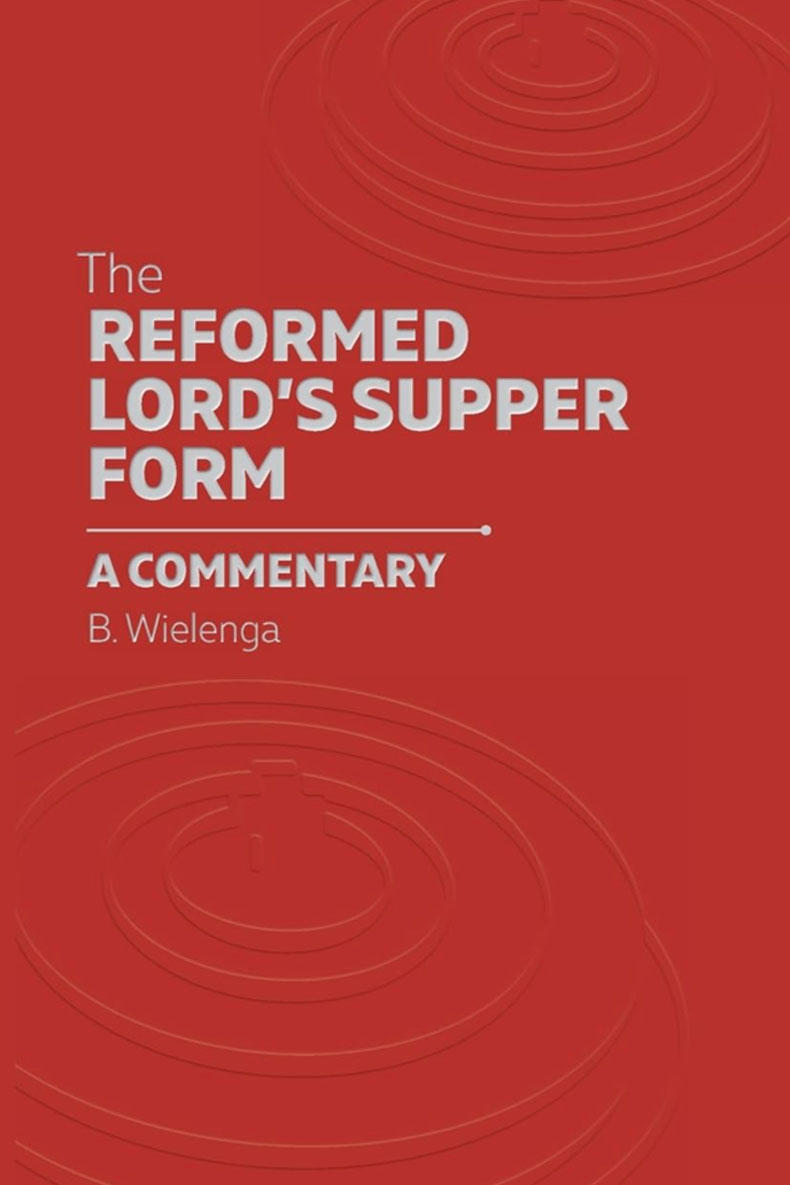The Reformed Lord’s Supper Form: A Commentary, by Bastiaan Wielenga. Edited by H. David Shuringa and translated by David J. Engelsma. Jenison, MI: Reformed Free Publishing Association, 2023. xii + 426 pp. $39.95.
One of the most important sources of the Dutch Reformed theological tradition has now been made available to an English readership thanks to the labors of H. David Shuringa and David Engelsma. This edition of The Reformed Lord’s Supper Form: A Commentary by the twentieth-century theologian, Bastiaan Wielenga (1873–1949) complements the English edition of The Reformed Baptism Form: A Commentary by the same author and released by Reformed Free Publishing back in 2016. Preceding this work are two helpful prefaces that situate this work within its theological context, highlighting pertinent themes addressed by Wielenga throughout. Additional features include instructive footnotes that direct the reader to an array of Dutch Reformed sources as well as a substantial bibliography of theological works.
Wielenga’s work is a commentary on the liturgical form used for the observance of the Lord’s Supper in Reformed churches of the Continental tradition like the Christian Reformed Church, the Reformed Church in America, the United Reformed Church, the Protestant Reformed Church, among others. This liturgical form for the Lord’s Supper was authored by the theologian Casper Olevianus (1536–87), one of the authors of the Heidelberg Catechism (1563), and officially approved by the Synod of Dort (1618–19).
Following Wielenga’s own introduction (chap. 1) which is largely a historical overview of the Form is a chapter on self-examination as the imperative prerequisite before partaking of the Lord’s Supper. One of the primary purposes of this prior self-examination, Wielenga argues is confirmation that it is a genuine one anchored biblical truth. Essential to such a faith is catechetical instruction which effectively inculcates the body of truth to the Christian. Such instruction provides the believer with the means for examining himself before receiving the ordinance. However, Wielenga strongly insists that the faith essential for participation in the Lord’s Supper is not a mere intellectual faith, but rather a true justifying faith is one that exercises itself by incorporating this truth into the fabric of the Christian’s life. “Therefore, authentic Reformed profession is first of all, an act of the intellect, but not in the sense of a raw intellectualism, but in the sense of a living knowledge that abides in the enlightened and sanctified mind of a Christian” (64).
Chapter 3 examines at length the traditional Reformed understanding of the Lord’s Supper as a communal act of covenant renewal. Such an approach to the Lord’s Supper demonstrates that traditional Reformed worship regards the ordinance (or “sacrament” to use the term employed by Reformed theology for this rite) as the liturgical outworking the covenant theology which is foundational to the Reformed system of doctrine. Returning to the theme of self-examination, Wielenga devotes considerable attention to “authentic examination.” This is the subject of chapter 4. After giving a brief exposition of 1 Corinthians 11, the author emphasizes the purpose of the Lord’s Supper as giving comfort to believers. However, reception of this comfort from the “sacrament” depends fundamentally on proper self-examination. From here, Wielenga proceeds to outline three essential steps to this authentic “personal examination”: personal contemplation of one’s sins and desperate state before God; belief in the promise of God in the gospel, that one’s sins are forgiven “only for the sake of the passion of death in Jesus Christ and that the perfect righteousness of Christ is imputed and freely given him as his own” (139); and “that everyone examine his conscience, whether he is minded henceforth to show true thankfulness to God in his whole life” (140), showing love and peace to his neighbor. Also, throughout this chapter, Wielenga directly connects access to the Lord’s Supper to church discipline in the section on the “power of the keys.”
Chapter 5 serves as an extensive exposition on the traditional doctrine of the Lord’s Supper itself. The main argument of this chapter is that the Supper primarily is a remembrance of the death of Christ. From this proposition Wielenga develops three supporting points: first, the Lord’s Supper persuades believers in their hearts of their reconciliation with God; second, it enables Christians to believe firmly that they belong to the covenant of grace, and thus receive all the riches of eternal life; and third, they are empowered by the Holy Spirit to live as partakers of the covenant. Chapter 6 stresses the unifying effect of the Lord’s Supper among believers. Finally, chapters 7–9 detail specifics regarding the actual administration of the Lord’s Supper within the context of Reformed worship.
The Reformed Lord’s Supper Form: A Commentary is a valuable compendium of classic Reformed thought regarding this ordinance from which anyone can benefit regardless of his theological orientation. Not only does it serve as a source of information concerning the traditional Reformed understanding of the Lord’s Supper, but also as a means of deepening and broadening appreciation of this visible illustration of the gospel ordained by Christ himself. It is suitable for the general Christian reader as well as the interested pastor and scholar. This work is indeed a notable achievement.
Andre A. Gazal
Montana Bible College, Billings, MT

